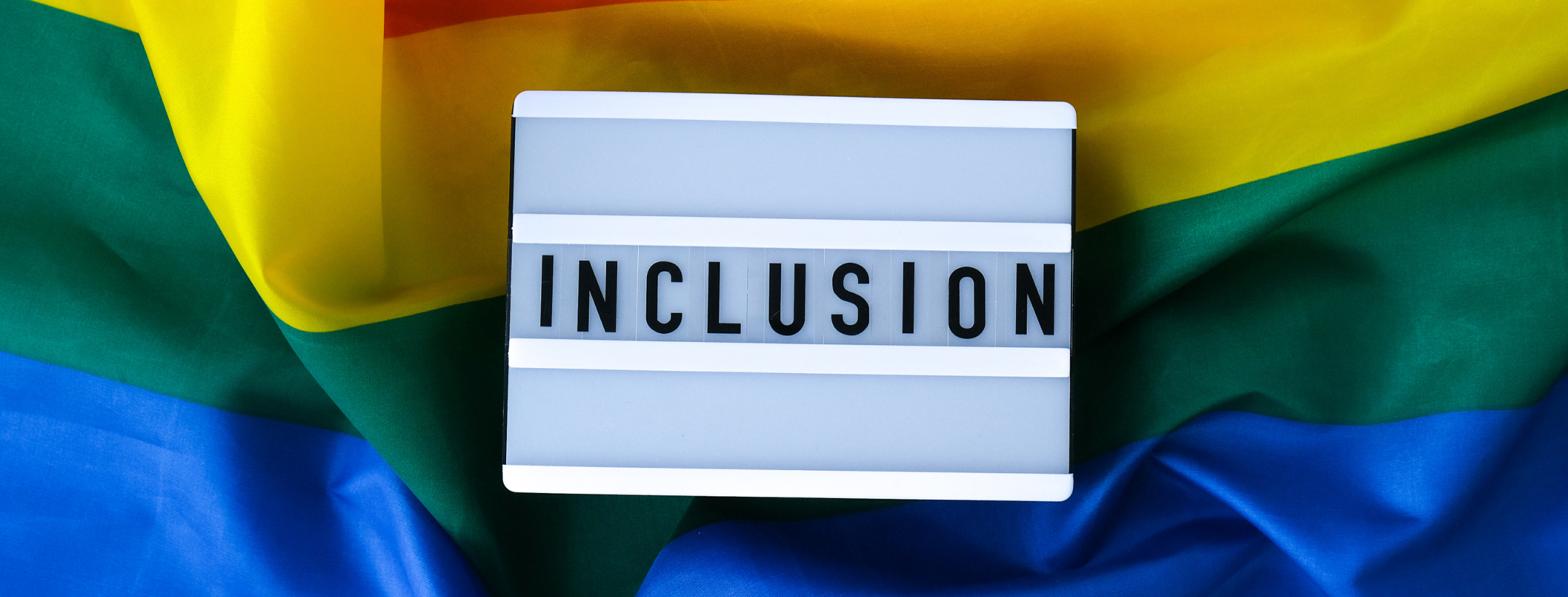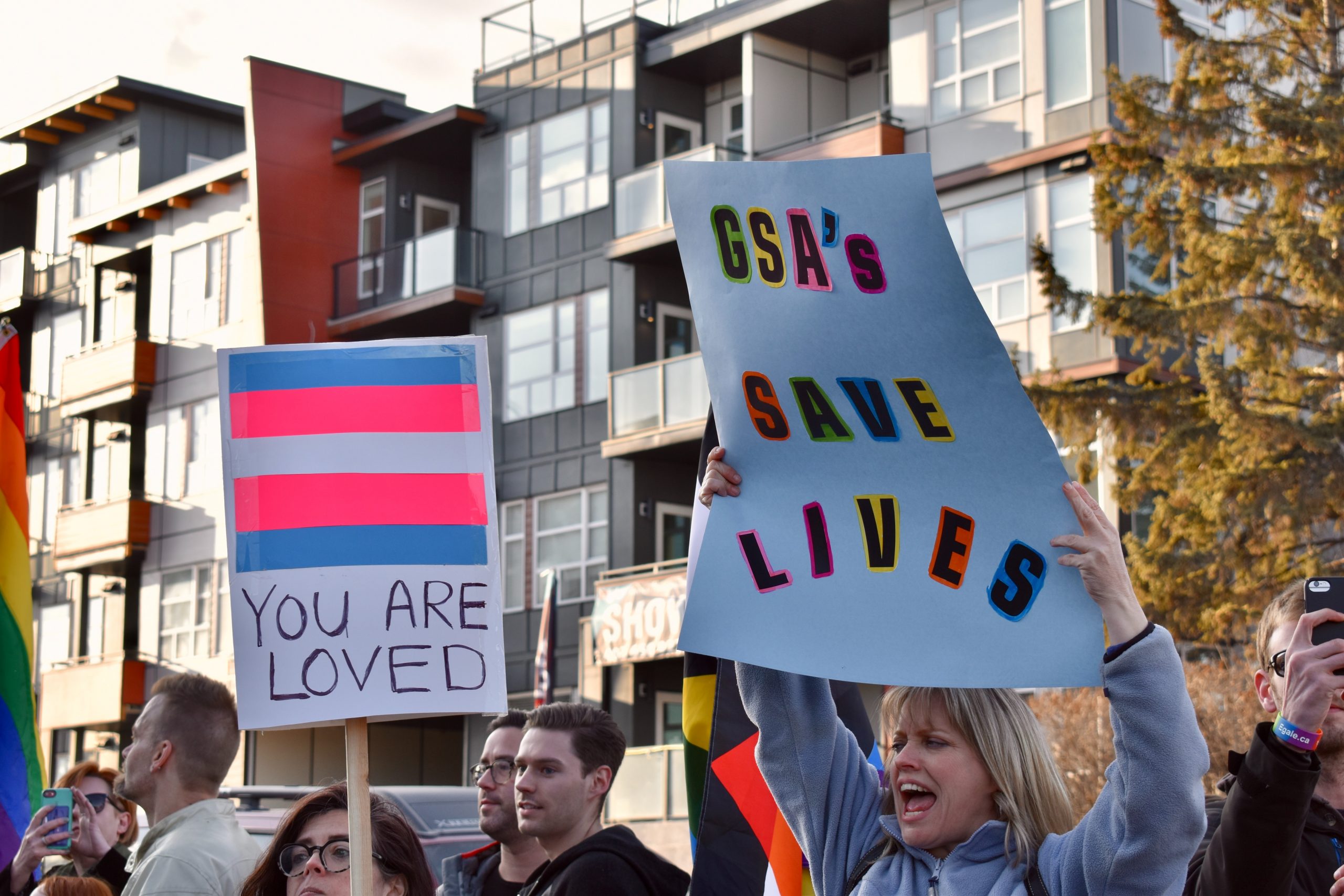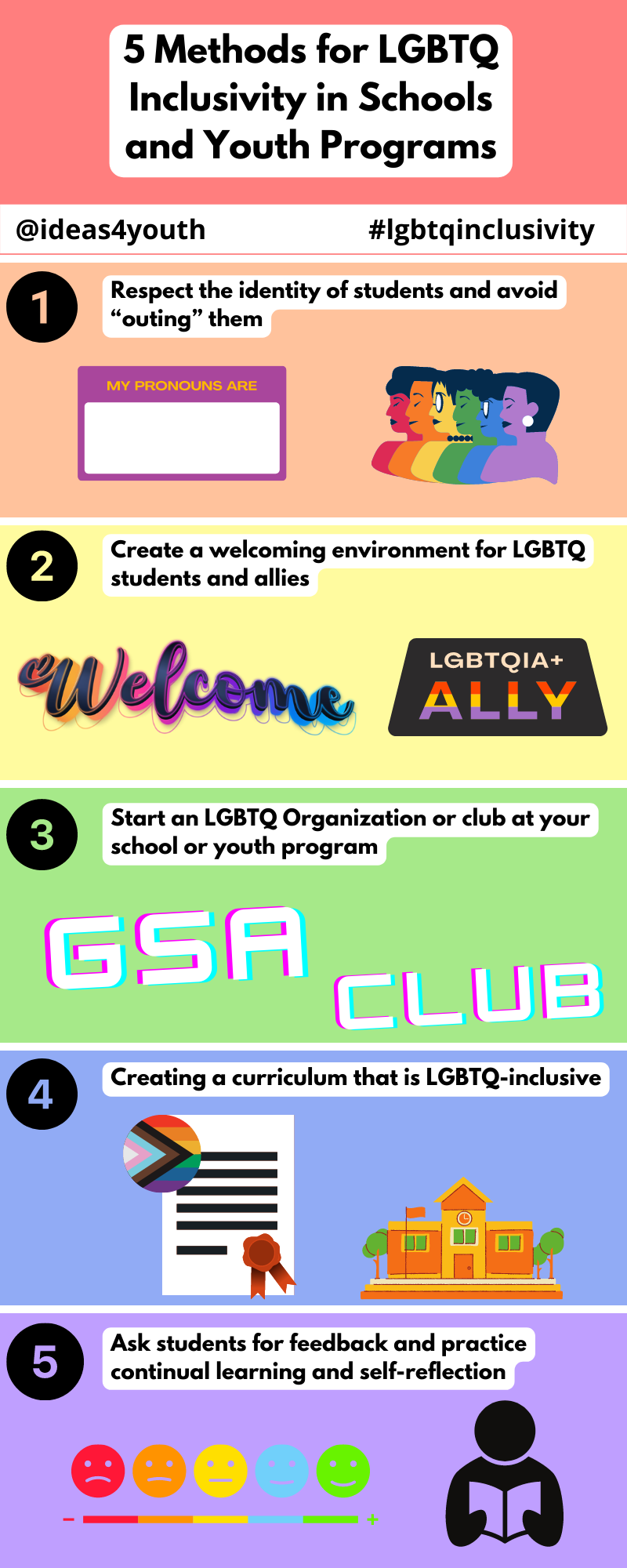
It’s no secret that if our youth are in a safe, supporting, and nurturing environment, they are more likely to thrive. Unfortunately, our LGBTQ youth are not always in that environment. In a study done by The Trevor Project, LGBTQ youth were more than 4x likely to attempt suicide because of negative treatment and unsafe environments. However, there is hope. The same study reported that LGBTQ youth who are in affirming spaces – that is, spaces that allow LGBTQ+ youth to be themselves and feel safe and supported – had a 30% lower odds of being bullied, thus reducing their risk of suicide. It’s clear that schools and youth programs have a role in providing that safe and affirming space that youth need. Below are five methods to make your classroom or youth program LGBTQ-inclusive.
1. Allow Students to Identify How They Want To, But Avoid “Outing” Them
A good start is by showing the students and youth you work with that you respect and support who they are by allowing them to identify how they want to be identified. This can be by their name, pronouns, or some other aspect of who they are; go by what they tell you. A good way to model this is by introducing yourself to students by your name and pronouns and allowing students to write down or tell you their name and pronouns. There can be many terms that you may or may not be familiar with; luckily, the GLAAD and GLSEN organizations have a list of terms with definitions and what terms to avoid using. It’s not an exhaustive list, but it’s a good place to start. It’s also important to be careful and avoid accidentally “outing” a student. A student may not have shared their sexual or gender identity with other people, but maybe they have shared it with you. For example, they’re comfortable sharing that information in class or program, but maybe not at home or with certain family members. To keep students safe, always ask them for their preferences regarding how they want you to share their private information and how they want you to address them when talking to different people.
2. Create a Welcoming Environment for LGBTQ Students and Allies
Asking students for their names and pronouns is the first step. Another step is to stop homophobic speech and bullying when you witness it taking place. Having stickers, signs, and posters that are LGBTQ-friendly and affirming tells students that they are in a welcoming and safe environment that won’t tolerate bullying and can be a source of support and trust. It also invites students to have an open discussion about LGBTQ issues and learn more about the LGBTQ community. When working in activities or anytime you need to divide students into groups, avoid doing so by their assumed gender. For example, don’t divide students or groups into boys and girls. Instead, use birthday months, letters, or colors to separate or name groups. Using language that doesn’t assume a student’s gender makes the environment more inclusive and mindful of students’ journey in their gender identity because they might not identify with the gender that people perceive it to be. Here are several ideas on how to divide students.
3. Start an LGBTQ Organization or Club at Your School/Youth Program
 Depending on your work setting and policies, you can start or encourage your students to start an LGBTQ organization or club, such as a GSA club, aka a Genders &Sexualities Alliance club (sometimes this club is known as the Gay-Straight Alliance club). GSAs have many benefits for students. According to a study done by GLSEN on the experiences of GSAs, several benefits students reported were: “greater feelings of school belonging; slightly higher levels of self-esteem; and slightly lower levels of depression”. GLSEN also reported that “Transgender, nonbinary, gender questioning, and other non-cisgender students attended GSA meetings more often than cisgender students.” This is important because transgender and nonbinary students are more likely to be bullied and attempt suicide, and having spaces such as a GSA could save a life. For those of you in a school setting, if there isn’t a GSA club already established, the GSA network provides steps on how to start one at your school. If there is a club already established, you should feel encouraged to support or participate in any way you can to increase your allyship. For those who work in a youth program, find out if you can start something similar or implement the activities that could be done at a GSA club within your youth program.
Depending on your work setting and policies, you can start or encourage your students to start an LGBTQ organization or club, such as a GSA club, aka a Genders &Sexualities Alliance club (sometimes this club is known as the Gay-Straight Alliance club). GSAs have many benefits for students. According to a study done by GLSEN on the experiences of GSAs, several benefits students reported were: “greater feelings of school belonging; slightly higher levels of self-esteem; and slightly lower levels of depression”. GLSEN also reported that “Transgender, nonbinary, gender questioning, and other non-cisgender students attended GSA meetings more often than cisgender students.” This is important because transgender and nonbinary students are more likely to be bullied and attempt suicide, and having spaces such as a GSA could save a life. For those of you in a school setting, if there isn’t a GSA club already established, the GSA network provides steps on how to start one at your school. If there is a club already established, you should feel encouraged to support or participate in any way you can to increase your allyship. For those who work in a youth program, find out if you can start something similar or implement the activities that could be done at a GSA club within your youth program.
4. Create a Curriculum That is LGBTQ-Inclusive
Depending on your state, the laws, and your policies, this may or may not be a challenge. Having an inclusive curriculum not only benefits LGBTQ students but also benefits all students. It promotes acceptance, challenges stereotypes, fosters a better understanding of LGBTQ folks, and provides a more accurate account of history. It also helps LGBTQ students feel valued, validates their experiences, and provides a space for them to be heard and represented. You can integrate LGBTQ topics and queer people in different subjects such as math, science, english, arts, and history. It is also important to represent different kinds of relationships and families than the binary male and female relationship. GLSEN provides resources on how to create an LGBTQ-inclusive curriculum.
5. Ask for Student Feedback and Practice Continual Learning and Self-Reflection
Trust that your students and youth are the experts of their own experiences and lives. It’s better to ask for their feedback on how you can support them, what has been working for them, and what changes they would like to see than to assume what is best for them. A few ways to start treating students as experts are to ask for feedback regularly, make asking questions and giving feedback an easy process, have the option for them to provide anonymous feedback, and continually educate yourself on LGBTQ topics and issues. Also, don’t assume LGBTQ students will have all the answers about the LGBTQ community. Many students and youth are discovering their identities, hence why it’s essential to ask them for feedback about how you can best support them as a person. If possible, participate in professional development training or workshops for continual learning. The CDC provides a self-assessment tool to assess your level of inclusivity, but please remember that it is not meant to be used as an evaluation or research tool.
At the end of the day, as long as you continue to put effort into visibly supporting your students and continue to learn, they will notice, and you will be making a difference in their lives.



